With all the hype and buzz surrounding the tragic deaths of kids from tipping furniture lately, I felt it would be appropriate to repost this article that I wrote a few years ago, and hopefully save a life. PLEEEEASE take the time to anchor your furniture to the wall. This post contains affiliate links for your convenience.
After I posted about this mid-century hutch, we got an overwhelming number of requests for more information on ‘anchoring’ furniture to the wall for safety purposes. After doing some research, I realized there are a lot of statistics and ‘scare stories’ about injuries and deaths caused by tipping furniture, but not a lot of info on how to prevent it. So let’s talk!
Ever since reading this heartbreaking story, I’ve been very passionate about furniture safety. Honestly, I hadn’t given it much thought before this. I was astounded to learn that 71 children per day are injured by tipping furniture, and every 2 weeks a child dies from their injuries. So much tragedy… I almost can’t let my heart go there.
Let’s start with some facts:
- Every two weeks, a child dies from an appliance, TV or furniture falling onto them
- Every day, 71 children are injured from an appliance, TV or furniture falling onto them
- 45% of the time, it happens in the bedroom
- 22% in the living room
- 4% in the kitchen
- 29% OTHER
- More than half of injuries are from a television falling
- Next is dressers / buffets
These tragedies can be prevented by taking low-cost steps to stabilize furniture, TV’s and appliances. It only takes a couple minutes to anchor these items.
~~~~~~~~~~~~~~~~~~~
So here are several ways you can anchor your furniture to the wall to protect your family.
The most simple and cheap option (for dressers only) is to remove the top drawer and screw the backboard of the dresser directly to the wall behind it …and then replace the drawer. If you can’t find a stud to screw into, be sure to use drywall anchors. This is only a good option if your dresser/bookshelf has a solid wood backing… NOT that flimsy particle board.
Another option is furniture anchor straps. There are several different kinds / brands. These are SO INEXPENSIVE my people. Kinda gives us all no excuse. Each one is simple to install, and provides step-by-step instructions on mounting. Click each pic below for more options:
{source}
One simple solution that WE often use on our own furniture (and what we used on this hutch) is a simple L-Bracket. This method does leave holes on the top of your furniture… but in our case, we don’t have anything new or expensive in our house, so it’s no biggie for us. HOLES IN YOUR FURNITURE < INJURED CHILD.
 {source}
{source}
Let’s move onto tipping televisions, since they account for 70% of all furniture-tipping-injuries. Obviously mounting your TV high on the wall (or above the fireplace) is ideal. But some of us use a buffet or low dresser to host our TV, and that’s where things can get scary.
Here are a couple excellent options. Click each pic for more detailed info.
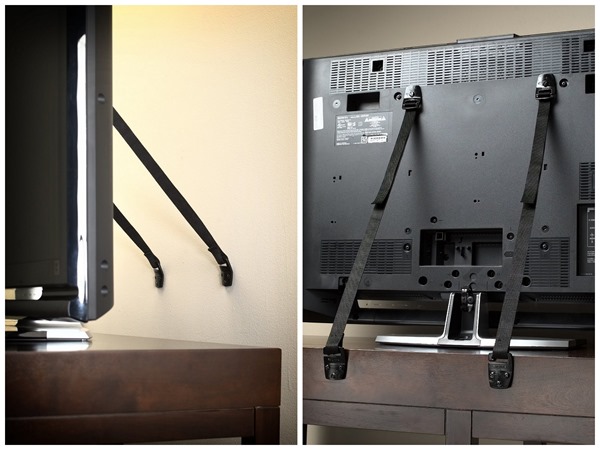 {source}
{source}
If you haven’t already secured your tip-able furniture to the wall, I implore you to make it a priority if you have children in the house (whether your own or visiting). Such a simple and inexpensive fix can save a life of a little one!
~Bethany
~~~~~~~~~~~~~~~~~~~~~~
Pin the image below and help spread the word!

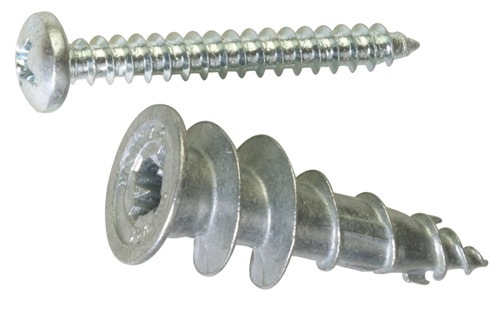
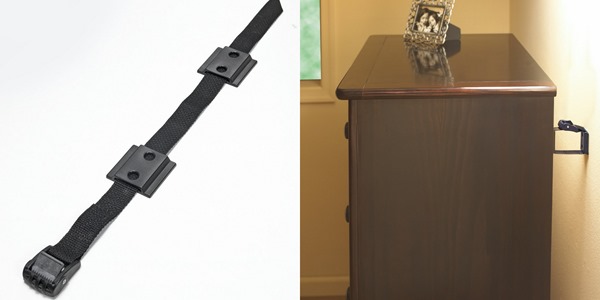
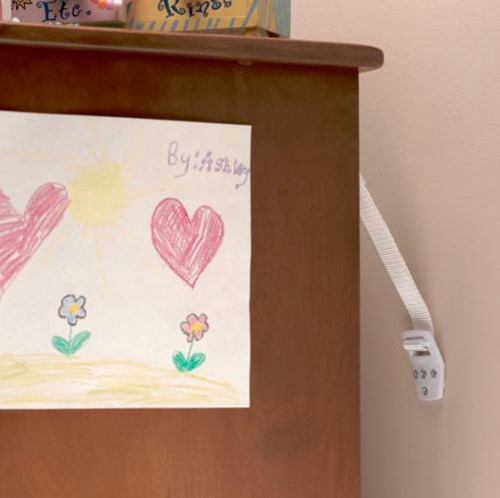
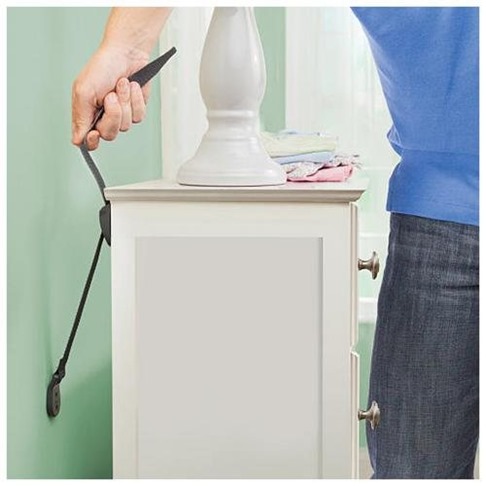
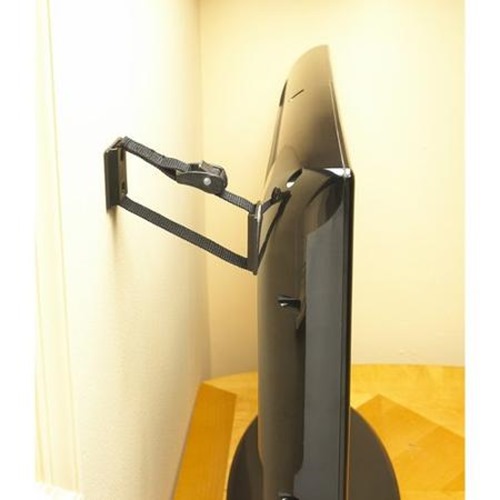




Our walls are really flimsy–my husband tried to mount a TV years ago and the whole thing, along with a chunk of the wall, came tumbling down. A handyman, who thought he had a product to outsmart thin walls, came and tried, and he couldn’t do it either. Would L brackets work under those circumstances?
The only thing you can do in this circumstance is to drill into the studs. You should do that even if you don’t have flimsy walls because you want your TV to be very secure and not fall on anyone!
A reader shared this post with me after I wrote about the fears the recent Nationwide commercial stirred up in me. Thanks so much for writing about something so incredibly important.
Thank you for your post! We have always been pretty good about anchoring our furniture to the walls. But tipping is not the only issue when it comes to furniture. Our 13 year old son, who has autism, moved the furniture in his room just enough to enable him to open and jump out of his window on the evening of New Years day – when we believed him to be safely snuggled in bed. He was not a “climber”. He had been trying to get out of the house to get to the garage door, which is a major obsession of his and we had already secured and alarmed all of the doors leading out, but never really thought he would be desperate enough to go through the window. Even though he jumped barefoot from 1 1/2 stories up, the soggy ground broke his fall enough to allow him to remain unharmed. Had he been injured and unable to run to the front door as he did, he would have frozen to death during the night, as we believed him to be safely snuggled in his bed and never heard a noise! We now have alarms (simple stick ons) on all windows and the door of his room, all items that could be used to boost him up are removed and the furniture is bolted securely to the studs in the walls.
Oh my goodness Karin, how terrifying! Thank you so much for sharing your story here and reminding us of window danger. Our windows are low enough to the ground that the girls wouldn’t even need to climb on anything to fall out the window. We have them locked, but I’m thinking it wouldn’t hurt to have an alarm on them either. You can never be too safe! I’m glad your son is ok!
I just read the story and it is absolutely terrifying…..when my daughter was 4 she used the drawers on her dresser as a staircase….it was not secured to the wall…..it came crashing down on her, after we heard the crash we sprinted to the room, I remember clearly thinking she was dead. Fortunately for us her dollhouse….not it it’s usual spot had stopped its fall and left just enough gap for her little body to lie. She got out safely, we got rid of the dresser. Securing your furniture to the wall should be the first thing you do when you have a baby. Thanks for sharing such important information.
Wow Gillian, that’s so scary! I’m so glad she’s ok! Thanks for sharing this!
What would you consider “tip-able” furniture?
Bookshelves, dressers, TVs, buffets, wooden dollhouses, large appliances. Anything that would hurt if it fell on a small child! It’s better to be safe than sorry. Anyone else want to add to this list?
Your Oven!!
I second the oven, my baby sister pulled the door down to our freestanding oven and climbed on it and it tipped forward with just the plug preventing it from completely falling, my 3 year old brother lifted the oven up and pulled her out, then ran and got mum. It was very heavy, if the plug hadn’t held it would have ended badly
Thank you for putting this post together and the many descriptive photos. Well done. I’ve shared this one on my Facebook page for my readers – http://www.EntriWP.com
Thank you so much for this post. Would you please put it on your Pinterest board so it can be pinned from there, also? I couldn’t get the pin to work on your post at first, and couldn’t figure a way around it. Thanks for your great blog.
You can copy and paste URL links into Pinterest and pin it that way.
Please consider revising your first recommendation: The most simple and cheap option (for dressers only) is to remove the top drawer and screw the backboard of the dresser directly to the wall behind it. If you can’t find a stud to screw into, be sure to use drywall anchors.
Many economy grade dressers have only ⅛” hardboard or pressboard backing held onto the dresser with ¼” staples. This would more than likely pull away from the dresser given the right circumstances for the dresser to tip forward, removing the backing from it.
My suggestion would be to place a spacer, 3″ wide and the length of the dresser and the width from the back of the dresser to the wall, securing to each stud (16″ on center) with 2″ screws. Then removing the top drawer and screwing through the fame of the dresser into the spacer at reasonable intervals would offer far better and safer support.
Better safe than sorry! Loved your other suggestions though.
MJ, that’s such a good point! I’ll be editing my post for sure! I didn’t think about how some dressers have flimsy backings!
Thank you for considering my suggestion and glad you are not offended. I look forward to all your upcoming projects.
THANK YOU for writing this post! I’ve been meaning to do some research and write a similar one, but haven’t gotten around to it. Anchoring your furniture is so important, and people talk about how important it is, but never do I see suggestions for actually doing it! Thank you, thank you, thank you!
I don’t dare click on that story, if it is the same one I am thinking of that I read about two years ago. I cried for days thinking about it and how it could be one of my precious babies that happened to. We anchored everything immediately. My babes were only 11 months old and barely walking, but I wasn’t taking any risks. We recently got a new tv and it is the only thing that isn’t anchored. I wasn’t sure how to go about it, but after seeing your post, I know what our Uncle Alex and Poppy are doing this week while they are here!!! 🙂
Thanks, Beth and Nick!!
I read that heartbreaking story about a year ago, it turns my stomach. Also, my best friend is an RN in the emergency room of one of our state’s top children’s hospitals, and she has told me horror stories.
My youngest has no closet in his room since we converted it from an office/breakfast nook into another bedroom. Prior to his birth, we purchased a gorgeous armoire off of Craigslist. It is extremely top heavy, as the top is made of solid marble. I’ve been begging my husband to help me anchor it, especially now that little man is two and climbs on EVERYTHING. The issue is the marble top, and the backing is simple particle board. I fear that should it tip, anchors would rip through the particle board due to the shear weight of the marble. Any suggestions?
French cleats! You put one piece (the bottom one) on the wall and one piece (the top one) on the back of your armoire. They fit together and prevent the armoire from moving.